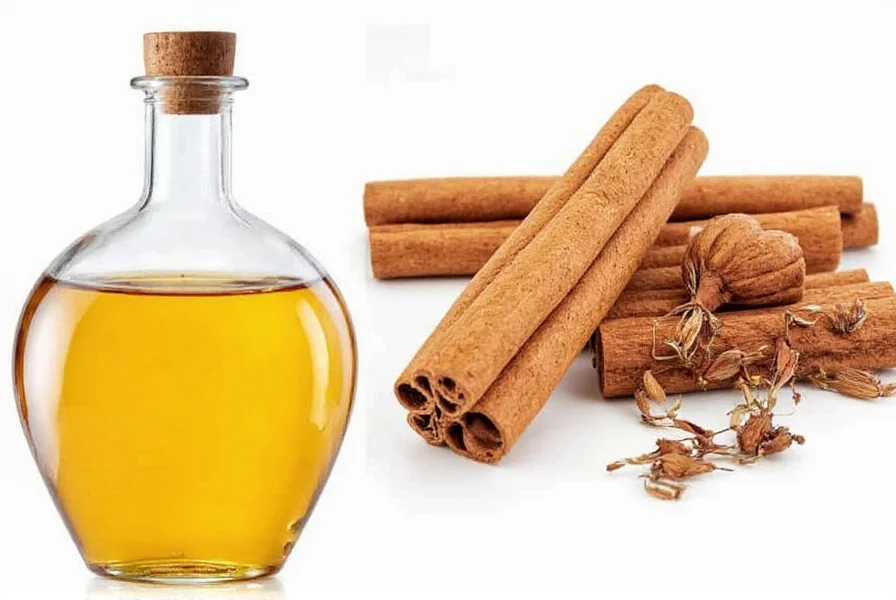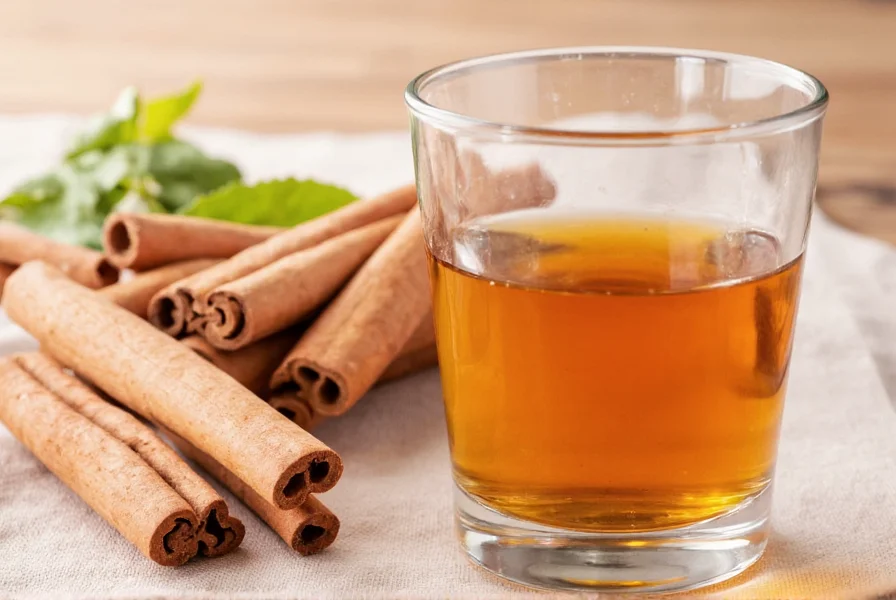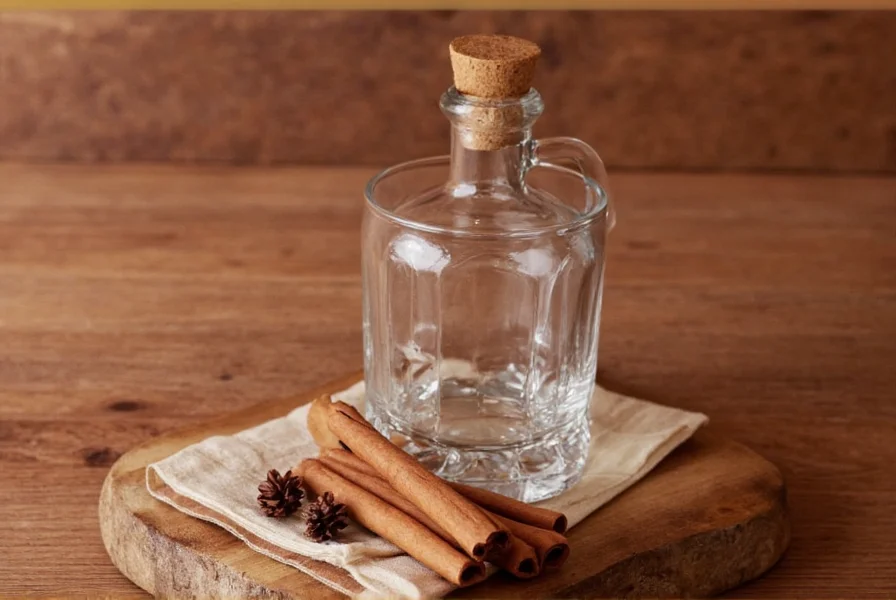Understanding what cinnamon alcohol is and how to use it properly matters for both culinary success and safety. Unlike commercial cinnamon extracts that often contain additional solvents or preservatives, homemade cinnamon alcohol represents a pure infusion method that preserves cinnamon's distinctive flavor profile while offering versatility in cooking and baking applications.
What Exactly Is Cinnamon Alcohol?
Cinnamon alcohol, technically termed a cinnamon tincture, forms when cinnamon's active compounds dissolve into alcohol through maceration. The process typically uses 80-100 proof alcohol (40-50% ethanol) as the solvent, which effectively extracts cinnamaldehyde—the primary compound responsible for cinnamon's characteristic flavor and aroma.
This preparation differs significantly from:
- Cinnamon extract - Often diluted with water or glycerin
- Ground cinnamon - Loses potency more quickly
- Cinnamon essential oil - Much more concentrated and not for direct consumption
| Product Type | Alcohol Content | Primary Use | Shelf Life |
|---|---|---|---|
| Cinnamon alcohol (tincture) | 40-50% | Culinary flavoring | 2+ years |
| Commercial cinnamon extract | 35-45% | Baking | 1-2 years |
| Cinnamon essential oil | 0% | Aromatherapy | 3-5 years |
How to Prepare Cinnamon Alcohol Safely
Creating homemade cinnamon alcohol requires attention to both ingredient quality and preparation methods. The traditional process involves:
- Selecting high-quality cinnamon sticks (Ceylon variety preferred for lower coumarin content)
- Using food-grade ethanol (vodka or grain alcohol works best)
- Maintaining a 1:4 cinnamon-to-alcohol ratio by volume
- Steeping for 2-4 weeks in a dark glass container
- Straining through cheesecloth to remove particulates
When preparing cinnamon alcohol at home, proper sterilization of equipment prevents contamination. Glass containers with tight-sealing lids work best for the steeping process, as plastic may interact with the alcohol solution. The finished product should appear clear with a rich amber color, indicating successful extraction of cinnamon compounds.

Practical Applications of Cinnamon Alcohol
Cinnamon alcohol serves multiple purposes across culinary and household applications. Its concentrated nature makes it valuable for:
Culinary Uses
- Adding depth to baked goods without introducing moisture (unlike liquid extracts)
- Creating signature flavors in craft cocktails and specialty beverages
- Enhancing fruit compotes and preserves with consistent cinnamon flavor
- Developing complex spice profiles in savory dishes like Moroccan tagines
Traditional and Household Applications
While not medically endorsed, some traditional preparations have used properly prepared cinnamon alcohol for:
- Natural surface cleaning solutions (when diluted appropriately)
- Homemade room sprays for seasonal fragrance
- Preserving cut flowers when added to vase water
Safety Considerations for Cinnamon Alcohol
Understanding the safety parameters of cinnamon alcohol prevents potential issues. Key considerations include:
- Coumarin content - Cassia cinnamon contains higher levels of coumarin, which may cause liver issues in sensitive individuals when consumed regularly
- Alcohol content - The final product retains the alcohol percentage of the base spirit used
- Storage requirements - Keep in dark glass bottles away from heat sources to maintain potency
- Shelf life - Properly prepared cinnamon alcohol remains stable for 24-36 months
When using cinnamon alcohol in cooking, remember that the alcohol content doesn't fully evaporate during baking. Those avoiding alcohol consumption should consider alternative flavoring methods. For culinary applications requiring alcohol-free options, consider making a glycerin-based cinnamon extract instead.

Cinnamon Alcohol vs. Commercial Alternatives
Understanding the differences between homemade cinnamon alcohol and store-bought options helps make informed choices:
- Purity - Homemade versions contain only two ingredients versus commercial products that may include preservatives
- Flavor intensity - Properly prepared tinctures deliver more consistent flavor than ground cinnamon
- Cost effectiveness - Making your own proves more economical for regular users
- Customization - Home preparation allows control over cinnamon variety and alcohol base
For those seeking cinnamon flavor without alcohol, water-based extracts or glycerin tinctures provide alternatives, though they typically have shorter shelf lives and different flavor profiles.
Frequently Asked Questions
Can you use any type of alcohol to make cinnamon alcohol?
Vodka (80-100 proof) works best as a neutral base that won't overpower cinnamon's flavor. Grain alcohol (everclear) creates a more concentrated tincture. Avoid flavored alcohols as they alter the final product's taste profile. The minimum alcohol content should be 40% (80 proof) to effectively extract cinnamon's compounds and prevent spoilage.
How long does homemade cinnamon alcohol last?
Properly prepared and stored in airtight dark glass containers away from heat and light, homemade cinnamon alcohol maintains optimal quality for 2-3 years. The high alcohol content acts as a natural preservative. Over extended periods, the flavor may gradually mellow but remains safe for consumption if stored correctly and shows no signs of contamination.
Is cinnamon alcohol safe for children?
Due to its alcohol content, cinnamon alcohol isn't recommended for direct consumption by children. When used in baked goods where alcohol partially evaporates during cooking, the residual amount becomes minimal. For child-friendly applications, consider making a non-alcoholic cinnamon extract using food-grade glycerin or creating a strong cinnamon tea infusion instead.
What's the difference between cinnamon alcohol and cinnamon extract?
Cinnamon alcohol (tincture) typically contains higher alcohol concentration (40-50%) compared to commercial cinnamon extract (35-45%). Tinctures represent a pure alcohol-cinnamon infusion, while extracts may include additional solvents, preservatives, or sweeteners. Homemade tinctures offer more control over ingredients but require preparation time, whereas commercial extracts provide convenience and standardized flavor intensity.
Can cinnamon alcohol go bad or spoil?
The high alcohol content prevents bacterial growth, making spoilage unlikely if prepared correctly. However, improper storage can degrade quality. Signs of compromised cinnamon alcohol include cloudiness, mold growth, or off-putting odors. Always use sterilized equipment during preparation and store in airtight containers away from light and heat to maximize shelf life and maintain flavor integrity.











 浙公网安备
33010002000092号
浙公网安备
33010002000092号 浙B2-20120091-4
浙B2-20120091-4